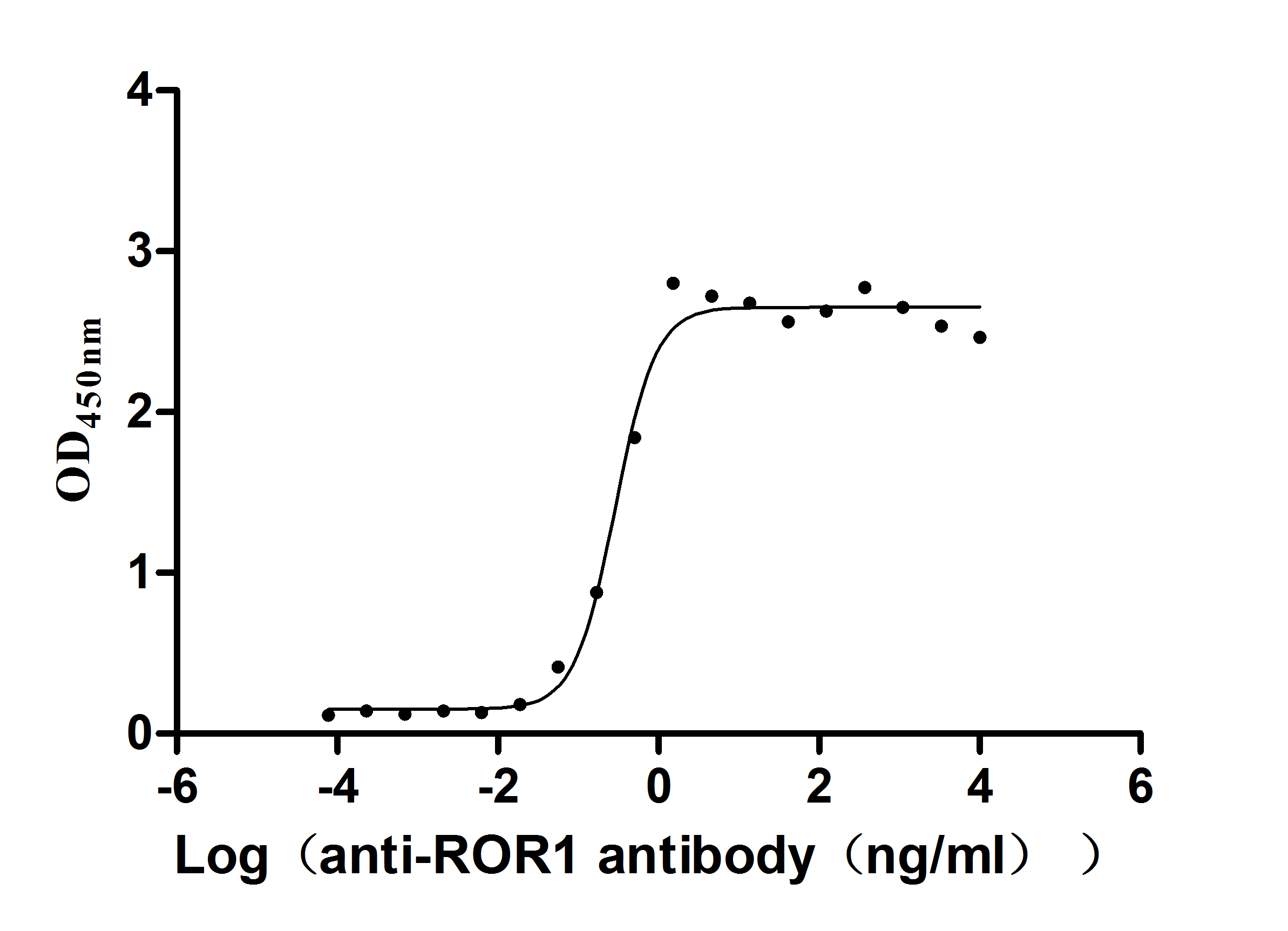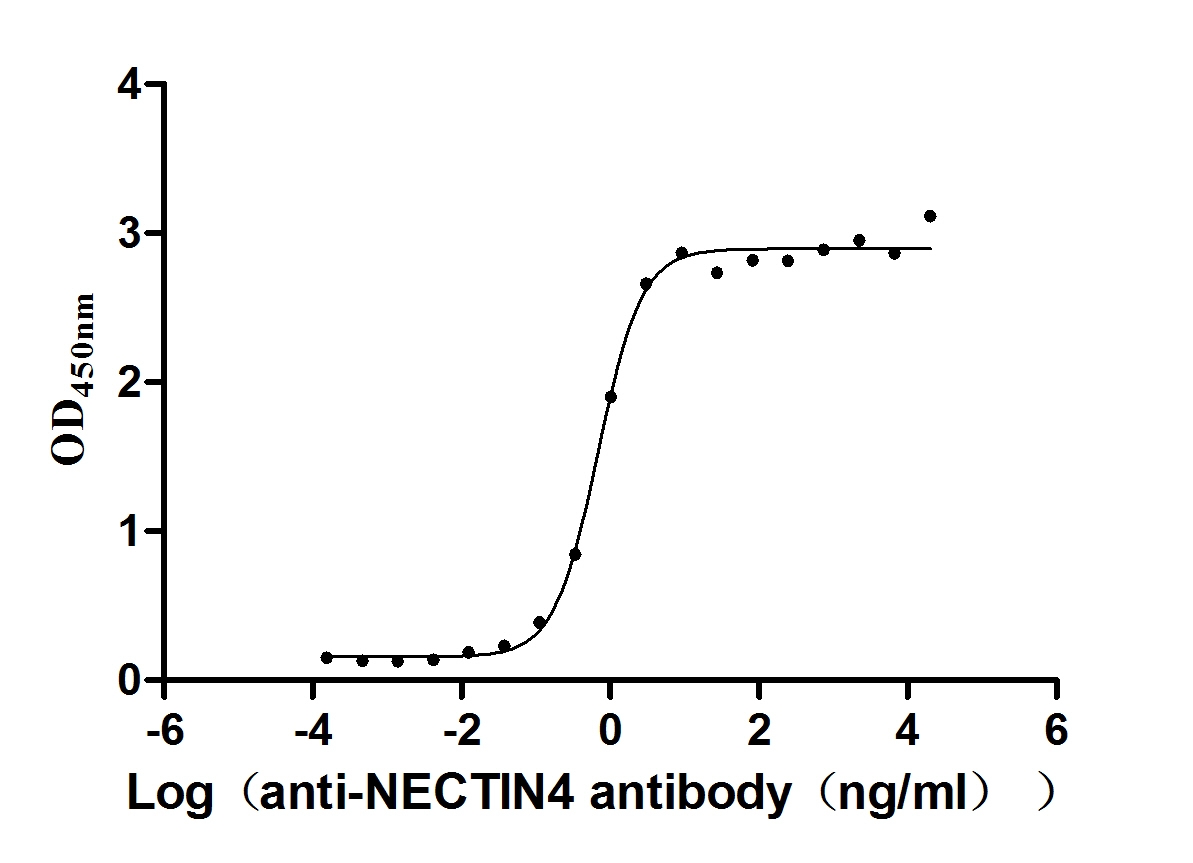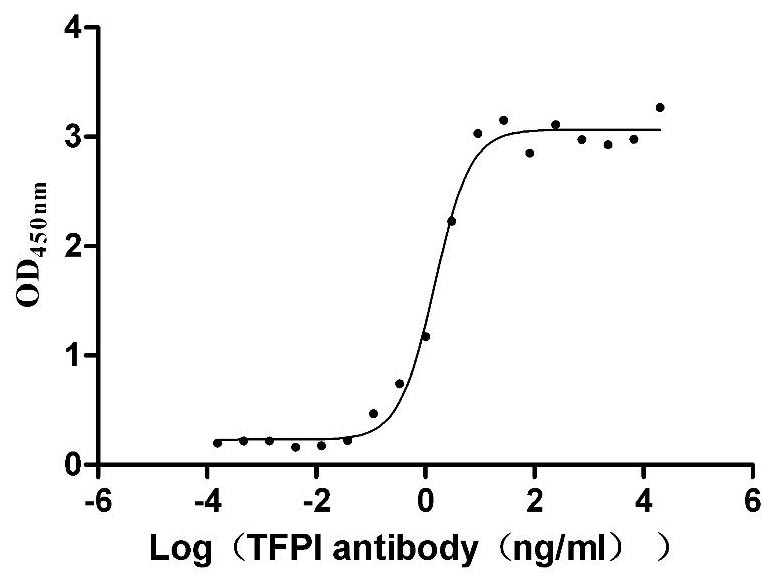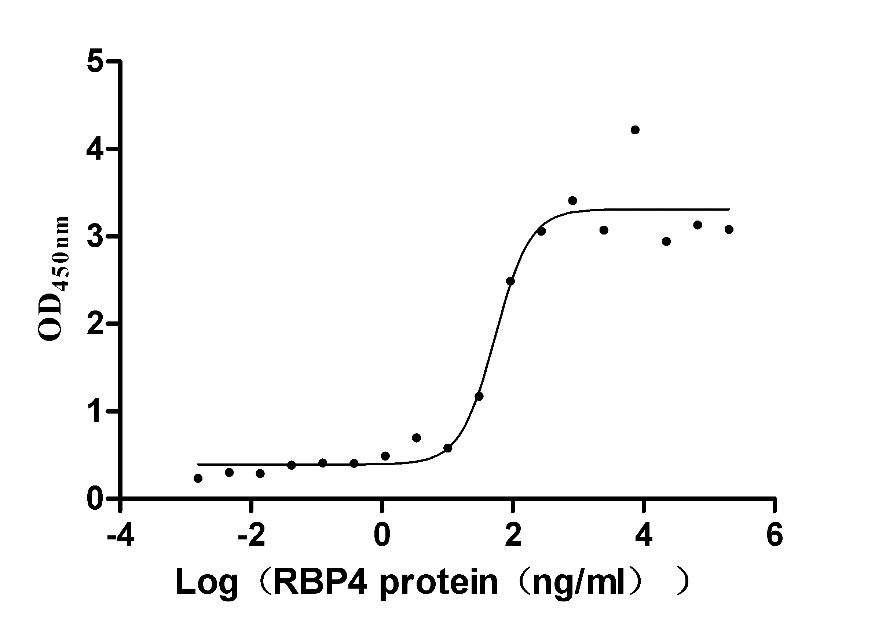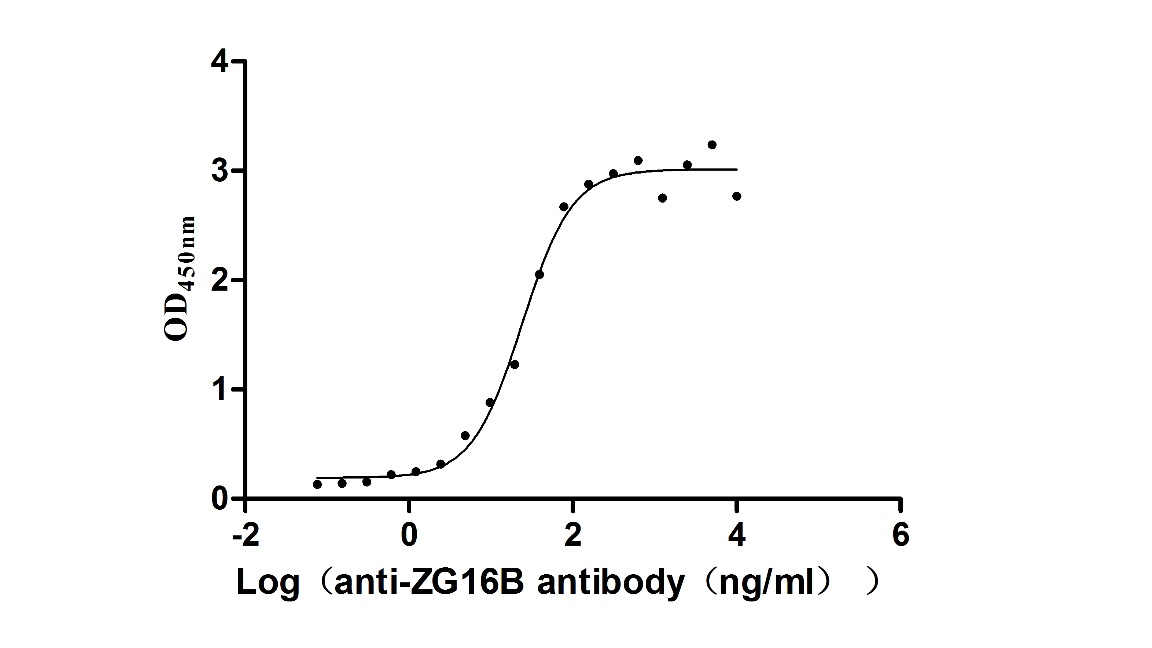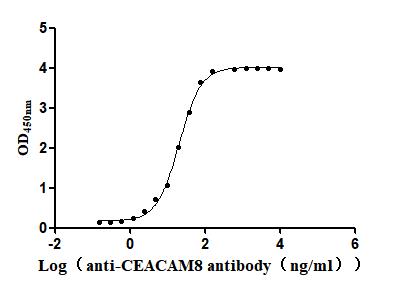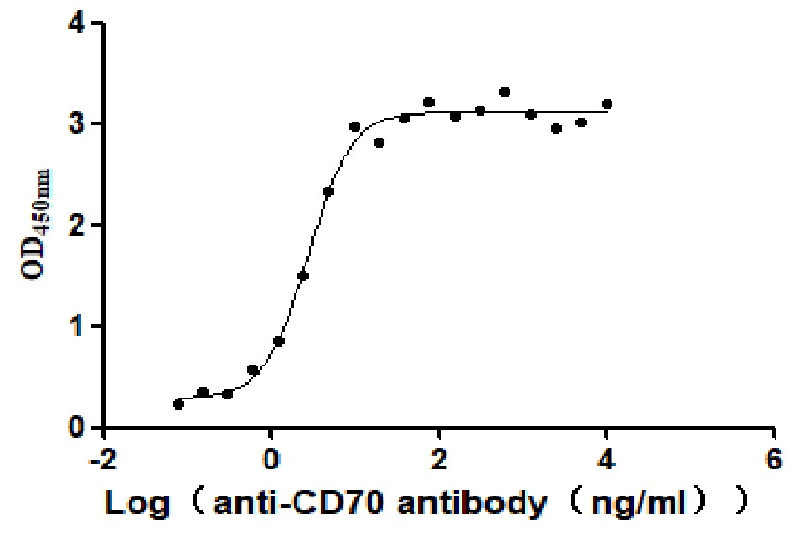Recombinant Human Myotonin-protein kinase (DMPK DM1PK MDPK)
-
中文名稱:
-
貨號:CSB-YP006968HU
-
規格:
-
來源:Yeast
-
其他:
-
中文名稱:
-
貨號:CSB-EP006968HU
-
規格:
-
來源:E.coli
-
其他:
-
中文名稱:
-
貨號:CSB-EP006968HU-B
-
規格:
-
來源:E.coli
-
共軛:Avi-tag Biotinylated
E. coli biotin ligase (BirA) is highly specific in covalently attaching biotin to the 15 amino acid AviTag peptide. This recombinant protein was biotinylated in vivo by AviTag-BirA technology, which method is BriA catalyzes amide linkage between the biotin and the specific lysine of the AviTag.
-
其他:
-
中文名稱:
-
貨號:CSB-BP006968HU
-
規格:
-
來源:Baculovirus
-
其他:
-
中文名稱:
-
貨號:CSB-MP006968HU
-
規格:
-
來源:Mammalian cell
-
其他:
產品詳情
-
純度:>85% (SDS-PAGE)
-
基因名:
-
Uniprot No.:
-
別名:Myotonin-protein kinase; MT-PK; EC 2.7.11.1; DM-kinase; DMK; DM1 protein kinase; DMPK; Myotonic dystrophy protein kinase; DMPK DM1PK MDPK
-
種屬:Homo sapiens (Human)
-
蛋白標簽:Tag?type?will?be?determined?during?the?manufacturing?process.
The tag type will be determined during production process. If you have specified tag type, please tell us and we will develop the specified tag preferentially. -
產品提供形式:Liquid or Lyophilized powder
Note: We will preferentially ship the format that we have in stock, however, if you have any special requirement for the format, please remark your requirement when placing the order, we will prepare according to your demand. -
復溶:We recommend that this vial be briefly centrifuged prior to opening to bring the contents to the bottom. Please reconstitute protein in deionized sterile water to a concentration of 0.1-1.0 mg/mL.We recommend to add 5-50% of glycerol (final concentration) and aliquot for long-term storage at -20℃/-80℃. Our default final concentration of glycerol is 50%. Customers could use it as reference.
-
儲存條件:Store at -20°C/-80°C upon receipt, aliquoting is necessary for mutiple use. Avoid repeated freeze-thaw cycles.
-
保質期:The shelf life is related to many factors, storage state, buffer ingredients, storage temperature and the stability of the protein itself.
Generally, the shelf life of liquid form is 6 months at -20°C/-80°C. The shelf life of lyophilized form is 12 months at -20°C/-80°C. -
貨期:Delivery time may differ from different purchasing way or location, please kindly consult your local distributors for specific delivery time.Note: All of our proteins are default shipped with normal blue ice packs, if you request to ship with dry ice, please communicate with us in advance and extra fees will be charged.
-
注意事項:Repeated freezing and thawing is not recommended. Store working aliquots at 4°C for up to one week.
-
Datasheet :Please contact us to get it.
相關產品
靶點詳情
-
功能:Non-receptor serine/threonine protein kinase which is necessary for the maintenance of skeletal muscle structure and function. May play a role in myocyte differentiation and survival by regulating the integrity of the nuclear envelope and the expression of muscle-specific genes. May also phosphorylate PPP1R12A and inhibit the myosin phosphatase activity to regulate myosin phosphorylation. Also critical to the modulation of cardiac contractility and to the maintenance of proper cardiac conduction activity probably through the regulation of cellular calcium homeostasis. Phosphorylates PLN, a regulator of calcium pumps and may regulate sarcoplasmic reticulum calcium uptake in myocytes. May also phosphorylate FXYD1/PLM which is able to induce chloride currents. May also play a role in synaptic plasticity.
-
基因功能參考文獻:
- The motor function (MRCSS and 6MWT) and CTG repeat length of DMPK significantly correlated with LV diastolic dysfunction in patients with myotonic dystrophy type 1. PMID: 30094526
- Variant repeats might explain a part of the phenotypic variability in a small percent of myotonic dystrophy type 1 patients and likely display a stabilizing effect on the meiotic instability of DMPK expanded alleles PMID: 28942489
- Haplotype analysis using various polymorphic-markers in proximity to DMPK gene indicates that a single founder mutation originates myotonic dystrophy type 1 in Mexico; however, Y-STR haplogroups data and the presence of pre-mutated and large normal alleles in Amerindians support the hypothesis that both European and Amerindian ancestral chromosomes might have introduced the disease to the Mexican population. PMID: 29054426
- Patients with myotonic dystrophy type 1 (DM1) may have a slight decrease in renal function that cannot be explained by a higher occurrence of risk factors for renal failure such as diabetes, hypertension or age. In addition, there was no correlation between CTG repeats, a marker of disease severity, and renal function. PMID: 29029879
- Interruptions within the DMPK expanded alleles could also interfere with the chromatin structure, the transcriptional activity of the Myotonic dystrophy type 1 (DM1) locus and the interaction with RNA CUG-binding proteins PMID: 27991661
- A second point is that DM mutations, although located in noncoding regions, may reduce the expression of mutant alleles, raising questions whether loss-of-function may contribute to the phenotype, or possibly impose a safety limit on knockdown therapies that create or aggravate a DMPK or CNBP deficiency state PMID: 28376341
- (CTG)>18 frequency of 3.60%, 1.57% and 4.00% in the Malay, Chinese and Indian subpopulations of Malaysia were discovered. PMID: 28363916
- The patients with DM1 nucleotide expansion (CTG) mutation showed widespread abnormalities of all DTI parameters in the white matter, which were associated with reduced gray matter volume in all brain lobes and thinning in parieto-temporo-occipital cortices. PMID: 27330968
- Our work suggests that DM1 patients are at risk for Fuchs' endothelial corneal dystrophy (FECD). DMPK mutations contribute to the genetic burden of FECD but are uncommon. We establish a connection between two repeat expansion disorders converging upon RNA-MBNL1 foci and FECD. PMID: 28886202
- findings thus suggest that nuclear retention may be a common feature of regulation of DMPK RNA expression. The typical forced nuclear residence of expanded DMPK transcripts affects this regulation in tissues of DM1 patients, but not through hyperadenylation. PMID: 28435090
- Data, including data from studies on synthetic RNA modeling RNA repeat expansions found in patients with Huntington's disease (mRNA for exon 1 of Huntingtin protein) and myotonic dystrophy type 1 (mRNA for 3prime untranslated region of dystrophia myotonica-protein kinase), suggest internal loops of r(3xCAG) are stabilized by one-hydrogen bond AA pairs, while those of r(3xCUG) prefer one- or two-hydrogen bond UU pairs. PMID: 28617590
- Analysis of five intergenerational transmissions revealed a substantial intrafamilial stability of the DM1 mutation among relatives. PMID: 27876818
- Methylation upstream of the expanded DMPK CTG repeat occurs exclusively with maternal transmission and that it is somehow linked to the development of congenital myotonic dystrophy. PMID: 28257691
- Study shows DMPK expression with a complex pattern of tissue-specific epigenetics consistent with evidence that normal tissue require careful regulation of its RNA and protein levels which might include cis-acting regulatory elements in neighboring genes. PMID: 26756355
- Sense DMPK RNA foci clearly co-localize with MBNL1 and MBNL2 proteins and accumulate in myotonic dystrophy 1 tissues during development. PMID: 26339785
- This study supports the idea that genetic abnormalities in DM1mainly target the white matter, but gray matter involvement is also crucial in determining the clinical characteristics of myotonic dystrophy type 1. PMID: 26214024
- that genome modification may be used to generate genetically modified progenitor cells as a first step toward autologous cell transfer therapy for Myotonic dystrophy type 1 PMID: 25702800
- miR-206 and miR-148a regulate the DMPK transcript and may functionally cooperate. PMID: 26304544
- Three SNP loci (rs915915, rs1799894, and rs10415988) associated with a high chance of myotonic dystrophy in Yakut population. PMID: 26310035
- In conclusion, our data suggest that the frequency of DMPK mutation carriers and the prevalence of DM1 in the Korean population might be higher than those reported in other ethnicities. Supporting PMID: 24274137
- This study found a correlation between CTG expansion and age of onset, temporalis wasting and mental disability. PMID: 24417793
- The results show that a DEAD-box helicase, DDX6, interacts with CUG-expanded DMPK-mRNA in primary fibroblasts from dystrophia myotonica type 1 patients. PMID: 24792155
- This study demonstrates the feasibility of carrying out longitudinal in vivo studies of muscle function over several months in a mouse model of myotonic dystrophy confirming the feasibility of this method to test preclinical therapeutics. PMID: 24139022
- The mismatch repair components MSH2, MSH3 and MSH6 were highly expressed in iPSCs compared with fibroblasts, and only occupied the DMPK1 gene harboring longer CTG.CAG triplet repeats PMID: 23933738
- This work may shed light on the alteration of this class of non-coding RNA as an additional molecular mechanisms involved in DM1 pathophysiology. PMID: 23196502
- Together with HK II and Src, mitochondrial DMPK is part of a multimolecular complex endowed with antioxidant and pro-survival properties. PMID: 24136222
- DMPK alleles in the samples cover four of five DM1 clinical categories: normal (5 to 34 repeats), mild (50 to 100 repeats), classical (101 to 1000 repeats), and congenital (>1000 repeats PMID: 23680132
- The results of this study supported the conclusion that different patterns of CCG interruptions within the CTG array could modulate the DM1 clinical phenotype, variably affecting the mutational dynamics of the variant repeat. PMID: 23263591
- These data demonstrate that the human DM1 locus carrying very large expansions induced a variety of molecular and physiological defects in transgenic mice, reflecting DM1 to a certain extent. PMID: 23209425
- In the DMPK/SIX5 locus, the presence of two potential replication origins presents an opportunity to screen for trans-acting second-site genes and therapeutic agents affecting chromatin structure, DNA replication, and trinucleotide repeats stability PMID: 22354993
- reduced DMPK may contribute to NE instability, a common mechanism of skeletal muscle wasting in muscular dystrophies. PMID: 21949239
- The results of this study suggested that peripheral neuropathy can be linked to a large CTG expansion and a severe form of DM1. PMID: 21760538
- analysis of CTG repeats at the DMPK gene in myotonic dystrophy patients and healthy individuals from the Mexican population PMID: 20635151
- NMR spectroscopy and molecular dynamics simulation show that the 5'CUG/3'GUC motif found in DM1 RNAs is dynamic. PMID: 21204525
- Only seven typical patients with myotonic dystrophy from six unrelated families were identified, all with large pathological CTG repeat expansions (> 400 repeats) in the DMPK gene PMID: 20801043
- Methylation of the CpG sites in DMPK locus does not correlate with CTG expansion size or with the congenital form of the disease. The size range of the repeat expansions with methylation was from as small as 300 to as large as 2800 repeats. PMID: 20644219
- An aberrant MTMR1 expression and signs of altered myofiber maturation were documented in DM1. There was more severe dysregulation of MTMR1 expression in DM1. PMID: 20685272
- This study showedthat an abnormal activation of the proteolytic Fbox32/ubiquitin-proteasome pathway may contribute to muscle atrophy in these mice and could be involved in the progressive muscle loss observed in the myotonic dystrophy type 1 patients. PMID: 20346670
- Steinert's disease caused by a dynamic mutation of (CTG) trinucleotide repeats in the 3' untranslated region of the myotonic dystrophy protein kinase gene (DMPK). PMID: 20228473
- a tail-anchored myotonic dystrophy protein kinase isoform induces perinuclear clustering of mitochondria, autophagy, and apoptosis PMID: 19946639
- eight years' experience of direct molecular testing for myotonic dystrophy in Wales PMID: 11748308
- Gene for myotonic dystrophy PMID: 11766468
- presymptomatic testing in myotonic dystrophy: genetic counselling approaches PMID: 11768386
- trinucleotide repeat contraction of a paternal expanded DMPK allele back to the normal range detected in the fetus: a pitfall in prenatal diagnosis of myotonic dystrophy PMID: 11768387
- negative linear correlation of age at onset and average expansion size in juvenile-adult DM1 patients (35 out of 46) whose progenitor allele is less than 245 repeats long PMID: 11793472
- conclude that mutant DMPK 3'-UTR transcripts disrupt myoblast differentiation by reducing MyoD levels below a threshold required to activate the differentiation program PMID: 12427866
- Levels of this enzyme are altered, along with muscle development, in congenital myotonic dystrophy. PMID: 12598332
- These studies indicate that homologous recombination strongly destabilizes long tracts of CTG repeats from DMPK PMID: 12697816
- enhancement of activity through homodimerization of coiled-coil regions PMID: 12832055
- the N-terminus of DMPK plays an important role in DMPK kinase activity, and that the C-terminus of DMPK determines the intracellular localization of the protein PMID: 14607980
顯示更多
收起更多
-
相關疾病:Dystrophia myotonica 1 (DM1)
-
亞細胞定位:Endoplasmic reticulum membrane; Single-pass type IV membrane protein; Cytoplasmic side. Nucleus outer membrane; Single-pass type IV membrane protein; Cytoplasmic side. Mitochondrion outer membrane; Single-pass type IV membrane protein. Sarcoplasmic reticulum membrane. Cell membrane. Cytoplasm, cytosol.; [Isoform 1]: Mitochondrion membrane.; [Isoform 3]: Mitochondrion membrane.
-
蛋白家族:Protein kinase superfamily, AGC Ser/Thr protein kinase family, DMPK subfamily
-
組織特異性:Most isoforms are expressed in many tissues including heart, skeletal muscle, liver and brain, except for isoform 2 which is only found in the heart and skeletal muscle, and isoform 14 which is only found in the brain, with high levels in the striatum, ce
-
數據庫鏈接:
Most popular with customers
-
Express system: Mammalian cell
Species: Homo sapiens (Human)
-
Recombinant Human Nectin-4 (NECTIN4), partial (Active)
Express system: Mammalian cell
Species: Homo sapiens (Human)
-
Recombinant Human Tissue factor pathway inhibitor (TFPI), partial (Active)
Express system: Mammalian cell
Species: Homo sapiens (Human)
-
Recombinant Macaca mulatta Semaphorin-4D isoform 1 (SEMA4D), partial (Active)
Express system: Mammalian cell
Species: Macaca mulatta (Rhesus macaque)
-
Recombinant Mouse Retinol-binding protein 4 (Rbp4) (Active)
Express system: Mammalian cell
Species: Mus musculus (Mouse)
-
Recombinant Macaca fascicularis zymogen granule protein 16 homolog B (ZG16B) (Active)
Express system: Mammalian cell
Species: Macaca fascicularis (Crab-eating macaque) (Cynomolgus monkey)
-
Recombinant Human Carcinoembryonic antigen-related cell adhesion molecule 8(CEACAM8) (Active)
Express system: Mammalian cell
Species: Homo sapiens (Human)
-
Recombinant Human CD70 antigen (CD70), partial (Active)
Express system: Mammalian cell
Species: Homo sapiens (Human)


